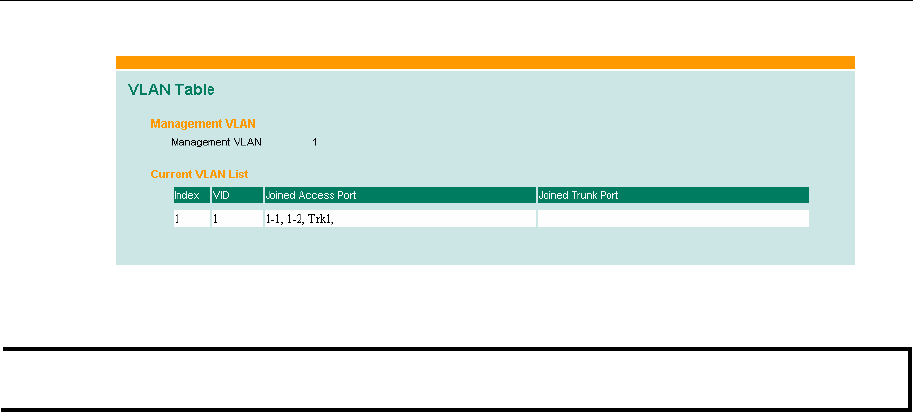
EDS-726 Series User’s Manual Featured Functions
3-42
VLAN Table
In this table, you can review the VLAN groups that were created, Joined Access Ports, and Trunk
Ports.
NOTE
The physical network can have a maximum of 64 VLAN settings.
Using Multicast Filtering
Multicast filtering improves the performance of networks that carry multicast traffic. This section
explains multicasts, multicast filtering, and how multicast filtering can be implemented on your
EDS-726.
The Concept of Multicast Filtering
What is an IP Multicast?
A multicast is a packet sent by one host to multiple hosts. Only those hosts that belong to a
specific multicast group will receive the multicast. If the network is set up correctly, a multicast
can only be sent to an end-station or a subset of end-stations on a LAN or VLAN that belong to
the multicast group. Multicast group members can be distributed across multiple subnetworks, so
that multicast transmissions can occur within a campus LAN or over a WAN. In addition,
networks that support IP multicast send only one copy of the desired information across the
network until the delivery path that reaches group members diverges. To make more efficient use
of network bandwidth, it is only at these points that multicast packets are duplicated and
forwarded. A multicast packet has a multicast group address in the destination address field of the
packet’s IP header.
Benefits of Multicast
The benefits of using IP multicast are that it:
y Uses the most efficient, sensible method to deliver the same information to many receivers
with only one transmission.
y Reduces the load on the source (for example, a server) since it will not need to produce
several copies of the same data.
y Makes efficient use of network bandwidth and scales well as the number of multicast group
members increases.
y Works with other IP protocols and services, such as Quality of Service (QoS).
Multicast transmission makes more sense and is more efficient than unicast transmission for some
applications. For example, multicasts are often used for video-conferencing, since high volumes of
traffic must be sent to several end-stations at the same time, but where broadcasting the traffic to
all end-stations would cause a substantial reduction in network performance. Furthermore, several


















